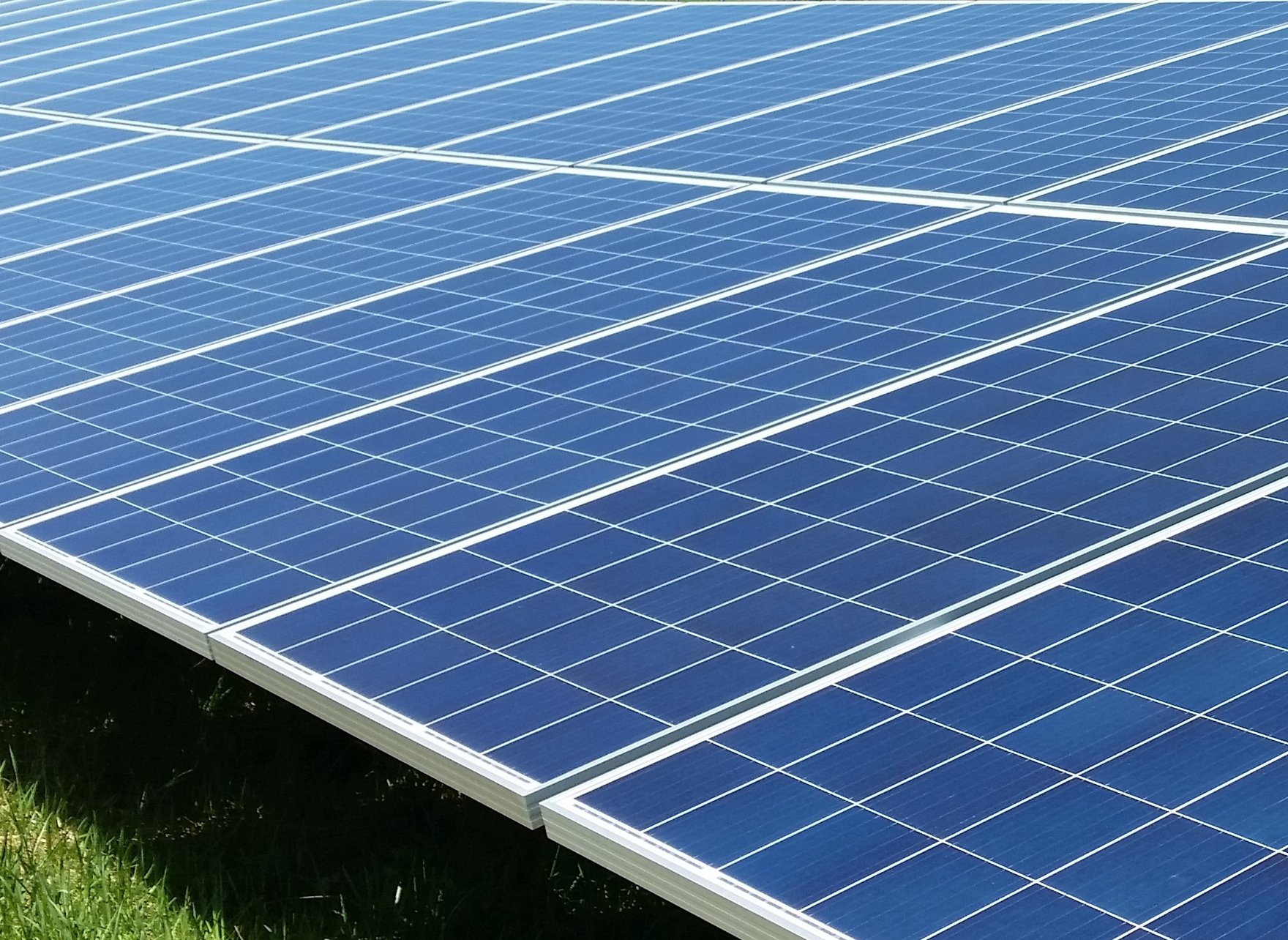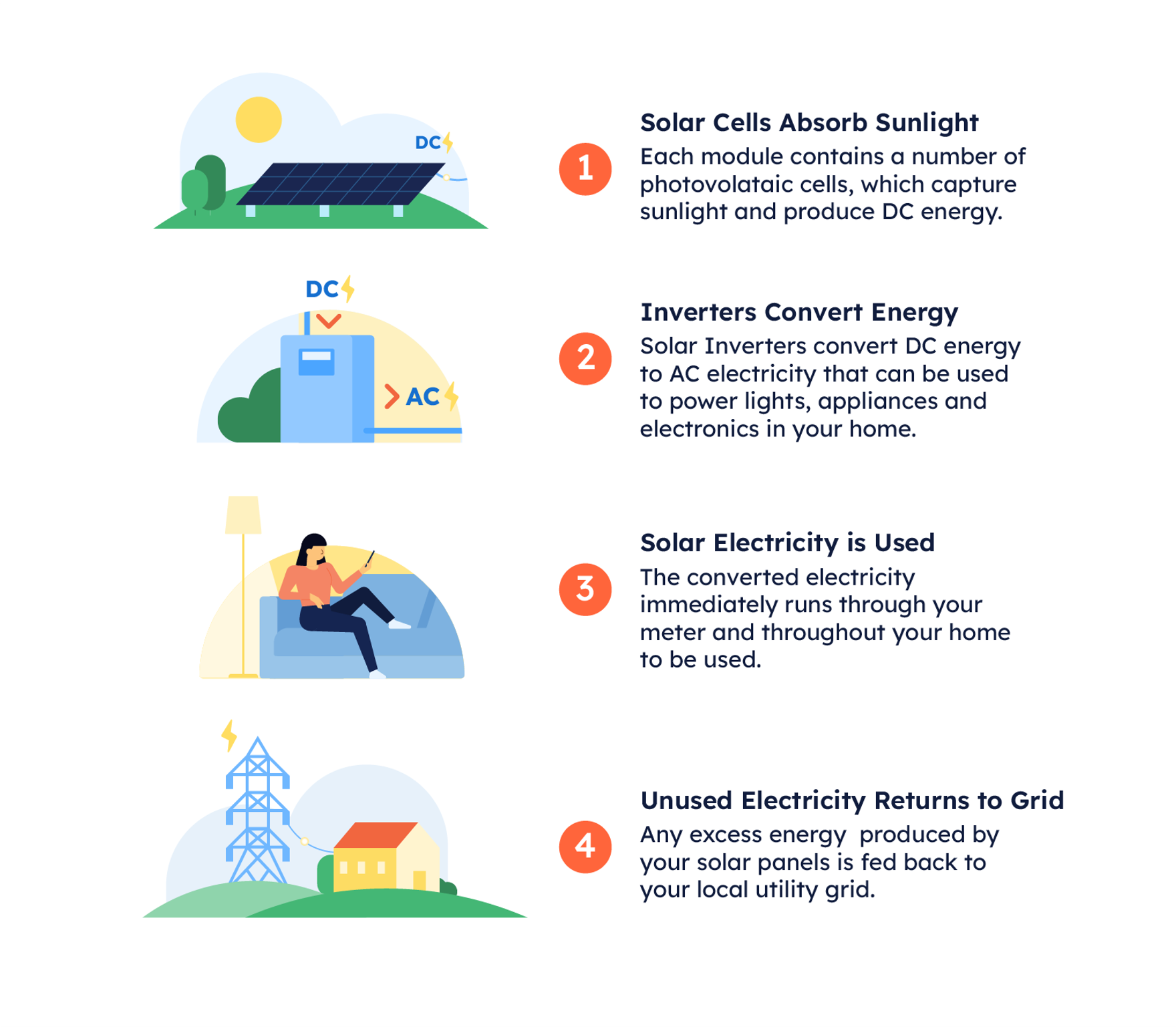
Did you know that solar is the most abundant energy source on the planet? It should come as no surprise that solar is also one of the fastest-growing sectors within the clean energy industry. The rapid development of ever-improving solar technology paired with falling costs and strong incentives thanks to the Inflation Reduction Act have made solar an attractive option for homeowners and even renters who are looking to support renewable energy and reduce their household electric costs.
Installing solar panels on your roof or supporting a local community solar farm is a win-win clean energy solution, but how does solar energy work? In this article, we’ll help you understand how solar panels generate energy from the sun, using an abundant natural resource to power homes and communities.
How Do Solar Panels Work?
When you think of solar, you might be thinking of a collection of panels on a roof or in a field as part of an array or solar farm, but did you know that a single solar panel (or solar module) is made up of a collection of even smaller components called photovoltaic (PV) cells, and these PV cells are where the solar power generation occurs. Let’s take a closer look at how solar panels work:

How Do Solar Cells Work?
Solar cells are made up of several layers, each of which plays a crucial role in energy production. These layers and their unique functions can help answer the question—how do solar panels work?
- Top Glass Layer: This is the first layer that the sunlight hits. The glass serves as a protective layer that lets sunlight through but blocks out all other elements.
- Antireflection Coating: The antireflection coating is what makes solar panels look blue. It allows the sunlight to pass through without reflecting out again.
- Semiconductor Layers (n-type and p-type): The n-type (negative) and p-type (positive) layers make up an electric field with positive and negative poles. When sunlight particles (photons) enter these layers, they release energy. When energy is released, electrons from the p-type layer get knocked to the n-type layer, creating an electric current.
- Metal Plate and Grid: The metal plate collects the electrons and transfers them to wires. These wires feed the DC energy to the inverter, which can then convert it to AC electricity, which can be used to power your home.

Do Solar Panels Work at Night?
Solar panels rely on sunlight to produce energy, so they do not generate electricity at night. However, most rooftop solar arrays remain connected to the local utility grid, ensuring you will have access to power even at night. If your home is connected to the utility grid, you will have a utility meter, usually placed on the siding or read of your home. Your solar panels are also connected to that meter, allowing you to access and measure their production.
- Net Metering: Net metering allows your solar panels to feed excess energy produced back to the utility grid in exchange for energy credits. These energy credits can offset your electricity usage when your panels aren’t producing energy and you need to draw from the grid, such as at night or on overcast days.
- Battery Storage: Pairing rooftop solar panels with a home solar energy storage system allows you to store energy that is produced during the day to be used at night or when solar production is low. Battery energy storage can help provide cost savings and power outage resilience.
Now that we’ve answered the question, how do solar panels work, it’s up to you if you’re ready to be part of the clean energy movement! Consider if installing solar panels on your roof or property might be right for you. If you’re looking for a lower commitment, consider subscribing to a community solar farm instead. Interested? Visit our community solar page to learn more!